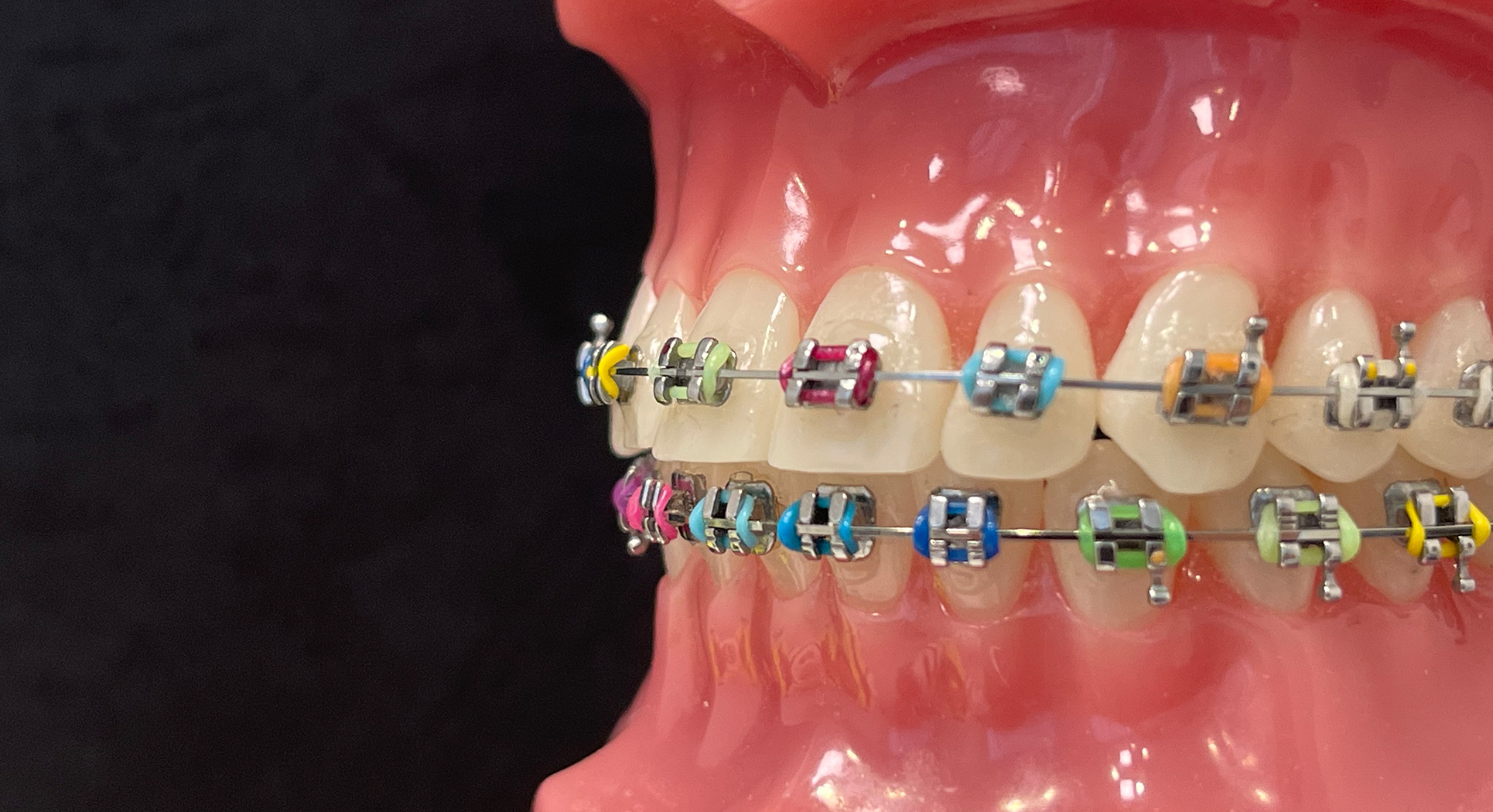Orthodontics

Orthodontics is a branch of dentistry specializing in the diagnosis, prevention, and treatment of malocclusions, both of dental origin (misalignment of teeth in the arch) and those resulting from skeletal abnormalities (caused by improper development and structure of the underlying bone).
Usually, the reason a patient consults an orthodontist is for aesthetic purposes. A harmonious, beautiful smile is now a sign of self-care, and often, issues in this area affect our self-esteem and how we are perceived by others around us.
However, it should be emphasized that orthodontic treatment is primarily conducted for health reasons. Misaligned teeth are more difficult to clean, making them more susceptible to decay and periodontal disease; during eating, their surfaces excessively wear down, worsening the malocclusion and potentially leading to temporomandibular joint disorders. With improper occlusion, patients may experience difficulty swallowing, speech issues, muscle tension, and even gastrointestinal problems when misaligned teeth do not perform their primary function of food breakdown.
There are many causes of malocclusion, but they can generally be divided into two groups:
-
Congenital
Genetically determined or caused by external factors during fetal development (nutrient deficiencies) - Acquired
Usually related to improper habits during the developmental period (such as thumb sucking, pacifier use, cheek sucking, nail biting, mouth breathing), abnormalities during the transition from primary to permanent teeth, or premature tooth loss; or as a result of facial trauma.
Different types of malocclusion are distinguished:
- Anterior-posterior, such as overbite or underbite
- Vertical: open bite, overbite, deep bite
- Transversal, such as crossbite or edge-to-edge bite
Often, different types overlap, and in such cases, we speak of mixed malocclusions. Malocclusion is often accompanied by dental abnormalities (rotations, tilts, displacements), which can also occur independently and are often a consequence of the loss of adjacent or opposing teeth.
At MALO CLINIC, we offer treatment using various types of braces:
- Removable appliances
Recommended mainly for patients during their developmental period. These are called functional appliances, which aim to stimulate the growth of the facial part of the skull and influence the proper shaping of the dental arches. - Fixed appliances
Composed of brackets (elements bonded to the teeth), an archwire, and additional components. Brackets can vary in size and material: metal (also nickel-free for allergy sufferers) or aesthetic (tooth-colored or transparent); they are usually attached to the outer (labial and buccal) surfaces of the teeth, although it is sometimes possible to use a lingual appliance, which is placed on their inner surface. - Aligners
These are appliances that are currently gaining popularity due to their transparent nature, individually tailored for each patient. They can be easily removed for meals, important meetings, or hygiene procedures. The design of the appliance – meaning the absence of visible fastening elements – makes it virtually invisible.
Orthodontic treatment can be performed at any age, and more adults are opting for it. Since growth potential cannot be utilized, this type of treatment requires a different approach from the orthodontist, and often involves the patient accepting a certain compromise effect. Orthodontic treatment is also frequently part of comprehensive multidisciplinary treatment, serving as a precursor to prosthetic, surgical, or implantological procedures.
Main objectives
- Restoring an aesthetic smile
Orthodontic issues often have an impact on the social and professional aspects of our lives, leading to situations where we feel embarrassed to smile. Proper treatment ensures an improvement in appearance and restores self-confidence.
- Improving oral hygiene
Crowded, crooked teeth significantly hinder the maintenance of proper oral hygiene. Correcting the position of teeth in the arch is key to preventing cavities and periodontal disease.
- Improving chewing function
In patients with malocclusions, especially those with improper alignment of the upper and lower jaws, improving chewing function ensures better food breakdown, proper digestion, and thus proper nutrition for the body.
- Improving phonetics and breathing
Eliminating breathing problems and improving verbal communication are crucial for the health and comfort of the patient.
- Preventing damage to the temporomandibular joints
In many cases, orthodontic treatment prevents complications and diseases in the temporomandibular joints, which can cause chronic pain, headaches, nausea, and limitations in opening and closing the mouth.
